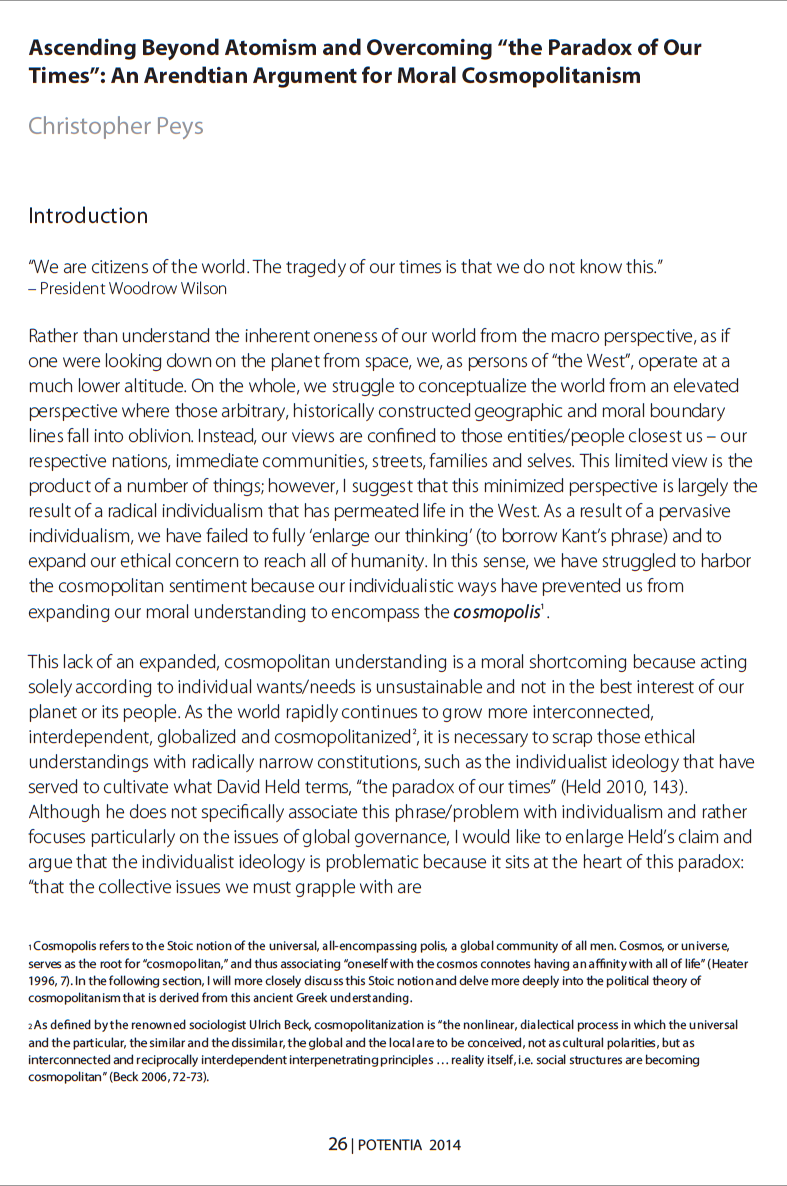Peer-Reviewed Articles
christopher peys, “children and their ‘right to be heard’: On a child-friendly politics in an age of polycrisis,” Journal of INternational Political Theory (2025). https://doi.org/10.1177/17550882251380721
Abstract: In an effort to illustrate both why and how children should be incorporated more fully into our world’s political proceedings, this article explores the utopian potential of Article 12 of the United Nations Convention on the Rights of the Child. Article 12 pertains to children’s “right to be heard.” More specifically, this article theorizes a radically inclusive approach to democracy described herein as a “caring,” “child-friendly” politics. This is a theory of politics that calls for children to be welcomed as equal citizens within our world’s various spaces of democracy. Accordingly, during a time beset by a complex series of overlapping, systemic global crises, this article reconsiders the possibility—a matter of hope—of allowing children to act as political equals alongside their adult counterparts. While climate change is the main international issue studied as a part of this article’s discussion of children and their agency, this piece of international political theory is ultimately about what it might mean for more radical political action to be taken to care for the world and those who will ultimately come to inherit it.
Christopher Peys & Brent J. Steele, “Restraint in International Politics: A Conversation between Brent Steele and Christopher Peys,” Contemporary Voices: St Andrews Journal of International Relations (CVIR). 29 April 2021.
Abstract: Taking into account the turbulent socio-political events of the first half of 2020, this discussion piece evaluates the theory of restraint presented in Brent Steele’s 2019 book, Restraint in International Politics. A conversation between Steele and Christopher Peys about the ‘politics of restraint’, this article examines the socio-psychological ‘complexes’ of actionism and restraint, and addresses a series of queries about both the limitations and possibilities of restraint, before examining Steele’s theory in the emerging context of our world’s recent race-related events, the COVID-19 pandemic, and the international community’s inability to confront the threat of widespread, human-induced environmental degradation.



